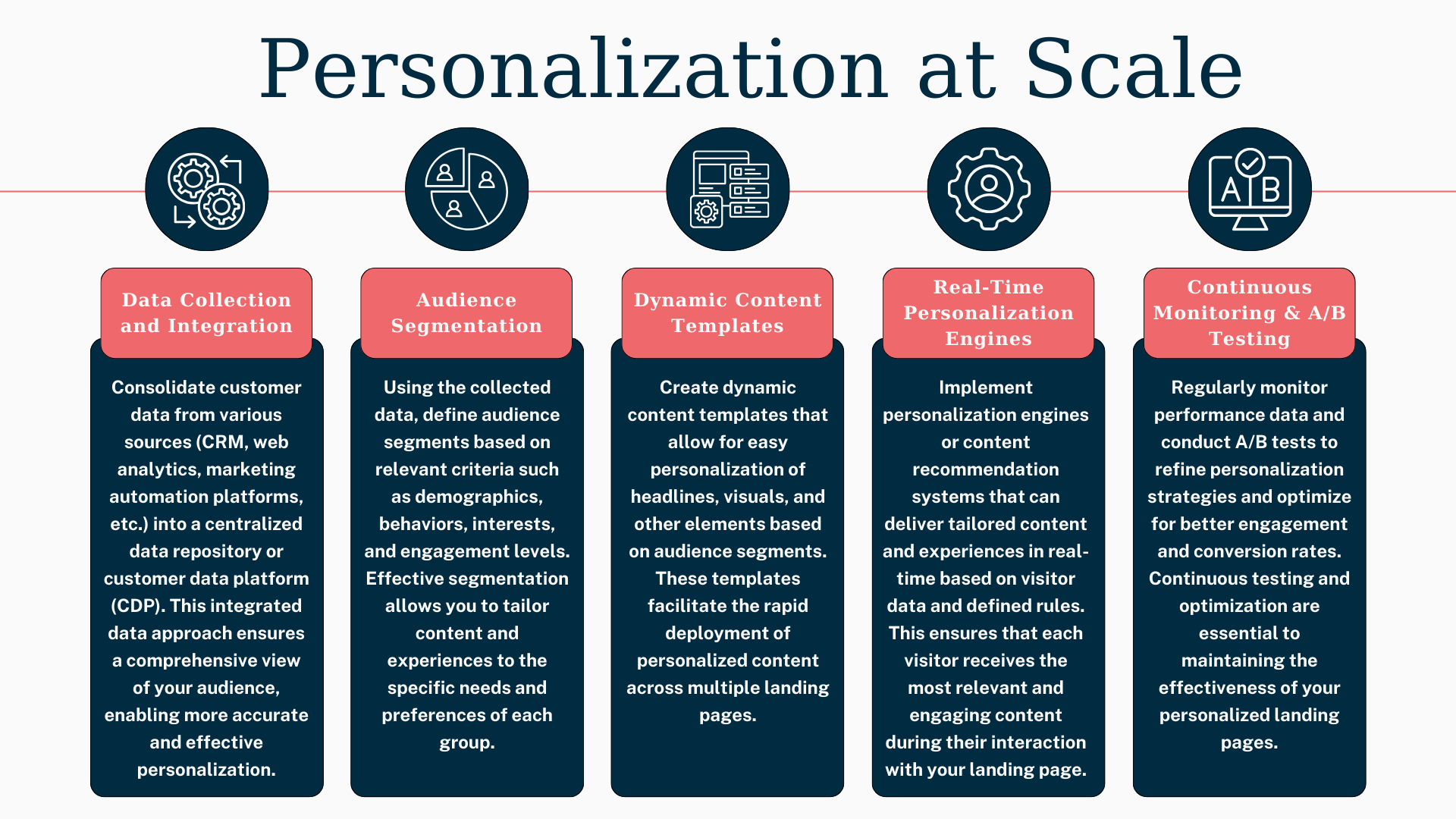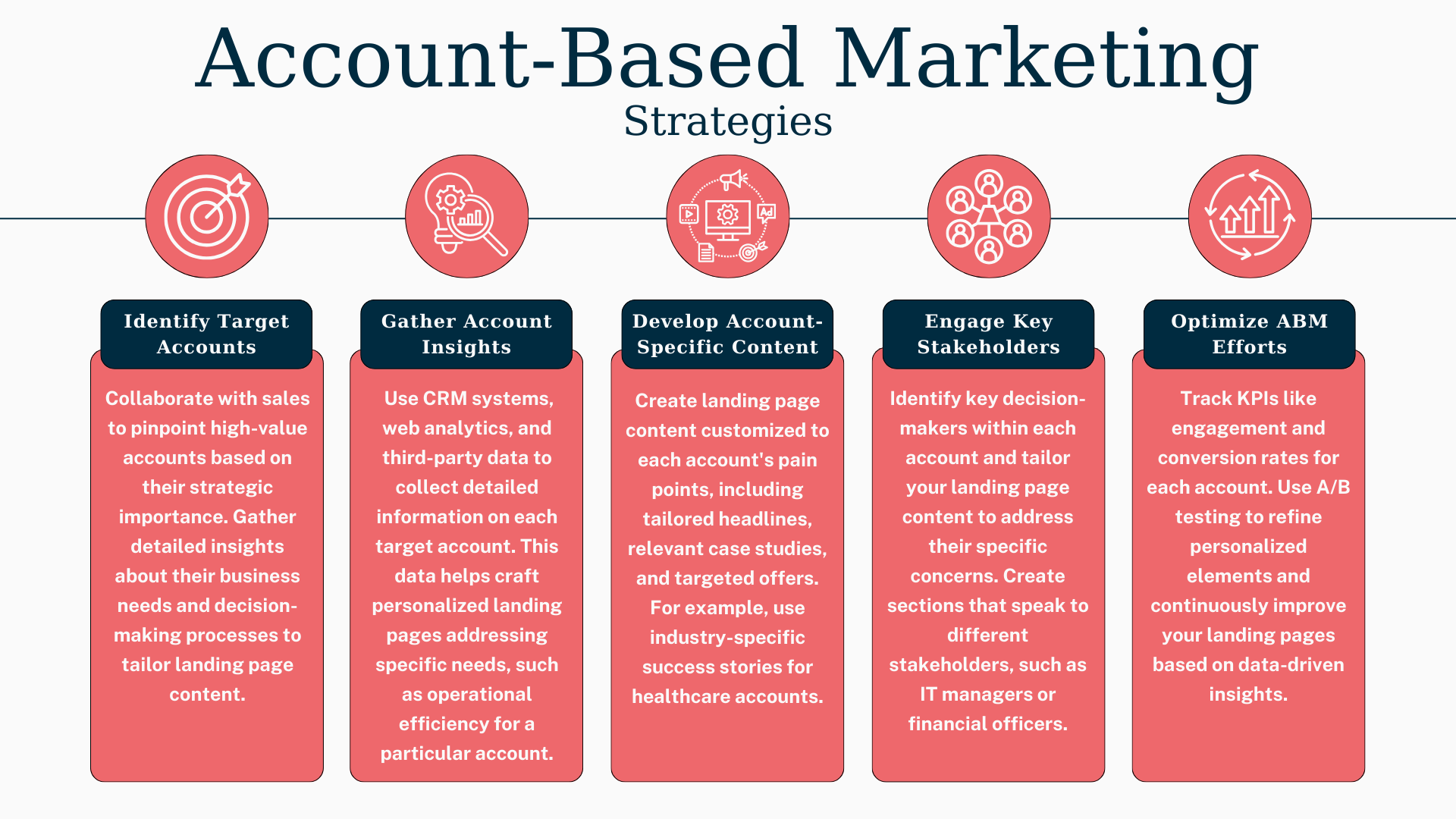Personalizing Landing Pages for Higher Lead Conversion
In today’s digital landscape, optimizing landing pages is crucial for effective lead generation and conversion. With consumers bombarded by countless marketing messages, personalization has emerged as a powerful strategy to deliver tailored experiences that resonate with individual interests and preferences. Studies from McKinsey have shown companies that excel at personalization generate 40% more revenue from those activities than average players. By understanding your target audience and tailoring content to their unique characteristics, behaviors, and preferences, marketers can significantly boost engagement and drive higher-quality leads.
Leveraging Technology to Scale Personalization
Martech platforms like content management systems (CMS), customer data platforms (CDPs), and personalization engines are essential for scaling personalization efforts. These technologies enable seamless data integration, audience segmentation, dynamic content delivery, and real-time personalization across multiple touchpoints.
Integrating your marketing technology stack ensures a consistent and cohesive experience for your audience, regardless of the channel or device they’re using. By facilitating data flow and personalization across platforms, you can deliver a unified and tailored experience throughout the customer journey.
Practical Steps to Personalize at Scale
To implement personalized landing pages effectively and at scale, follow these practical steps:

Account-Based Marketing (ABM) Strategies
Account-based marketing (ABM) is a strategic approach that aligns marketing and sales efforts to target specific high-value accounts with personalized marketing efforts. When applied to landing pages, ABM allows you to create highly tailored content and offers based on detailed account-specific data and insights. Here’s how to implement ABM strategies for personalized landing pages effectively:

By integrating Account-Based Marketing (ABM) strategies with personalized landing pages, businesses can create highly relevant and engaging experiences tailored to the unique needs and challenges of their most valuable accounts. This approach involves understanding the dynamics within buying groups—which often include diverse roles such as CISOs, IT managers, and compliance officers—each with distinct responsibilities and decision-making criteria. By gathering insights into these roles’ specific pain points and preferences and then crafting landing page content that addresses these aspects, companies can significantly enhance engagement and improve conversion rates. According to a HubSpot study, acknowledging pain points on landing pages can increase conversion rates by 80%, demonstrating the effectiveness of this targeted strategy in the B2B landscape.
Measuring the Impact of Personalization
To assess the effectiveness of your personalized landing page strategies, it’s essential to track and analyze relevant performance metrics. Key performance indicators (KPIs) to monitor may include:
- Conversion rates (form submissions, lead captures, etc.)
- Engagement metrics (time on page, scroll depth, click-through rates)
- Lead quality scores
- Revenue and pipeline contribution from personalized landing pages
Web analytics tools, CRM systems, and marketing automation platforms can provide valuable data for tracking and analyzing these KPIs. Regularly reviewing this data will enable you to identify areas for improvement, refine your personalization strategies, and optimize for better results.
Challenges and Considerations
While personalized landing pages can significantly boost lead generation efforts, implementing and scaling these strategies presents several challenges. It’s crucial to address these obstacles proactively to ensure successful personalization efforts.
- Data Hygiene: Ensuring the accuracy, completeness, and relevance of customer data is critical for effective personalization. Poor data quality can lead to inaccurate segmentation and irrelevant experiences. For ABM strategies, the smaller scale allows for manual data clean-up and temporary measures to be effective. However, when scaling personalization across a larger audience, automated data cleaning tools and processes become essential to maintain data integrity and ensure reliable segmentation.
- Accurate Segmentation: Defining audience segments and understanding their unique needs and preferences can be complex, especially in larger organizations with diverse customer bases. In ABM, the focus on a smaller number of high-value accounts allows for more detailed and manual segmentation. Conversely, scaling personalization efforts requires robust data analytics and segmentation tools to handle the volume and diversity of customer data effectively.
- ABM and Buying Group Architecture: Aligning personalization efforts with account-based marketing strategies and identifying key stakeholders within buying groups requires robust data integration and processes. While ABM benefits from detailed, account-specific insights and personalized interactions, scaling this level of personalization across a broader audience necessitates advanced martech solutions to manage data flow, segment audiences accurately, and deliver personalized content at scale.
- Content Availability: Creating personalized content at scale can be resource-intensive, requiring a significant investment in content creation and management. For ABM, personalized content can be developed manually for a few high-value accounts. However, to scale personalization, marketers need dynamic content templates and automation tools that can generate and deploy personalized content efficiently across multiple segments and channels.
- Ethical Considerations: Maintaining transparency about data collection and usage, respecting user consent, and avoiding invasive or excessive personalization are essential for building trust and adhering to ethical standards. Both ABM and scaled personalization efforts must prioritize user privacy and data protection, but the complexity and volume of data in large-scale personalization make it particularly important to have robust privacy policies and compliance measures in place.
By recognizing and addressing these challenges, martech leaders can successfully implement and scale personalized landing page strategies. Understanding the different requirements and approaches for ABM versus large-scale personalization ensures that marketers can effectively tailor their strategies to their specific goals and audience sizes.
Conclusion
Personalization is crucial in digital marketing to generate better leads and increase conversion rates. By tailoring landing pages to individual interests, behaviors, and needs, marketers can improve audience connections and deliver relevant content. Implementing personalization at scale requires careful planning, data integration, and ongoing optimization, but the potential rewards are worth it. Start small, experiment with different tactics, and refine your strategies based on data-driven insights. By adopting a customer-centric approach to personalization, you can drive meaningful business impact.
